Internet of Things (IoT) Functionality Report: Unit 43, HND Computing
VerifiedAdded on 2022/09/02
|11
|1440
|28
Report
AI Summary
This report delves into the realm of the Internet of Things (IoT), exploring its core functionality and the technologies that underpin it. It begins with an introduction to IoT, defining its components and historical context, and then examines the key characteristics that define IoT systems, such as connectivity, intelligence, scalability, and adaptability. The report further investigates various IoT applications across diverse sectors, including smart cities, smart homes, and retail. It reviews standard architectures, frameworks, tools, hardware, and APIs used in IoT development. The report also covers techniques for developing IoT applications. Finally, the report identifies a specific problem that can be solved using IoT, and outlines the purpose and functions of a potential project to address that problem. The report concludes with a summary of the key findings and references to the sources used.
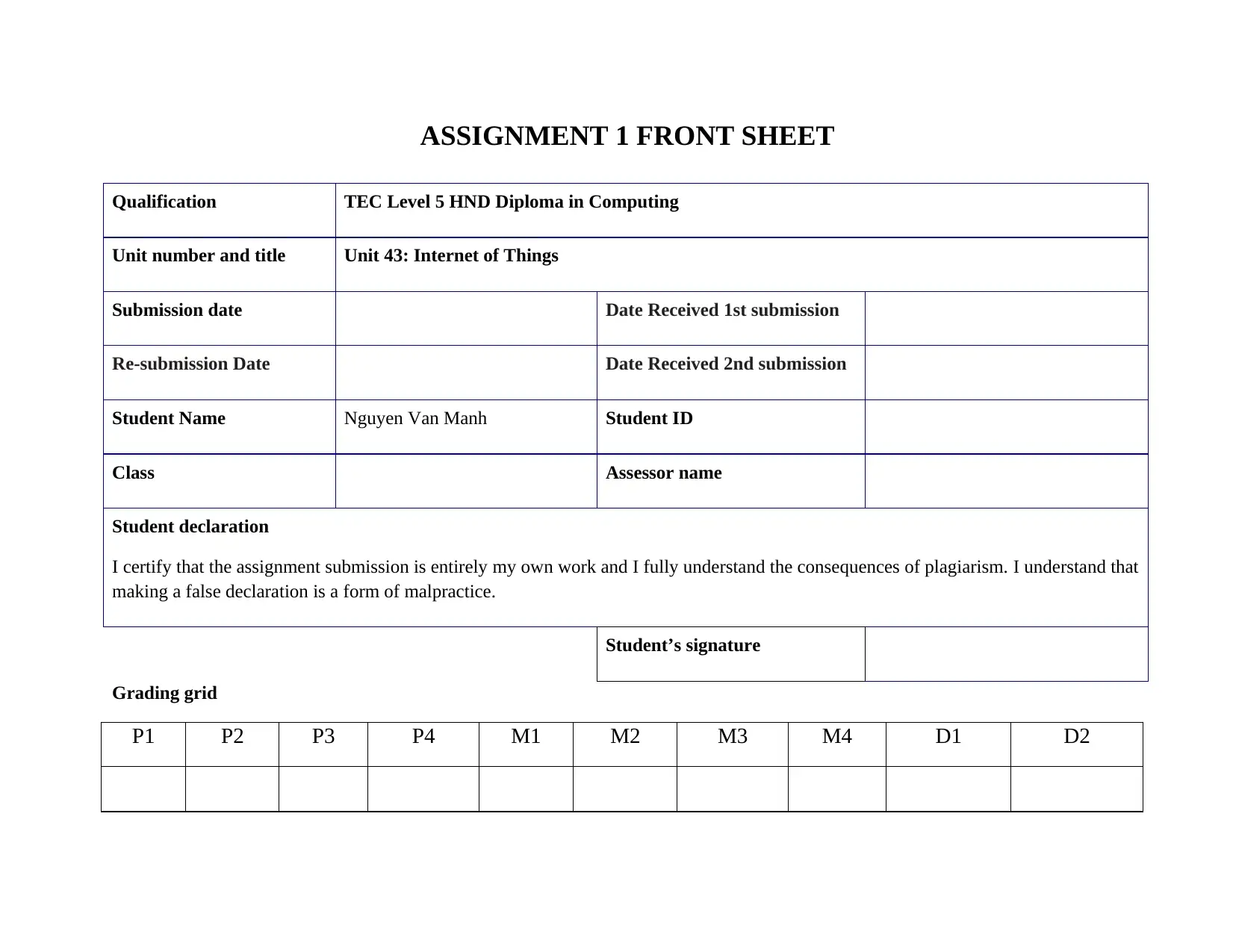
ASSIGNMENT 1 FRONT SHEET
Qualification TEC Level 5 HND Diploma in Computing
Unit number and title Unit 43: Internet of Things
Submission date Date Received 1st submission
Re-submission Date Date Received 2nd submission
Student Name Nguyen Van Manh Student ID
Class Assessor name
Student declaration
I certify that the assignment submission is entirely my own work and I fully understand the consequences of plagiarism. I understand that
making a false declaration is a form of malpractice.
Student’s signature
Grading grid
P1 P2 P3 P4 M1 M2 M3 M4 D1 D2
Qualification TEC Level 5 HND Diploma in Computing
Unit number and title Unit 43: Internet of Things
Submission date Date Received 1st submission
Re-submission Date Date Received 2nd submission
Student Name Nguyen Van Manh Student ID
Class Assessor name
Student declaration
I certify that the assignment submission is entirely my own work and I fully understand the consequences of plagiarism. I understand that
making a false declaration is a form of malpractice.
Student’s signature
Grading grid
P1 P2 P3 P4 M1 M2 M3 M4 D1 D2
Paraphrase This Document
Need a fresh take? Get an instant paraphrase of this document with our AI Paraphraser
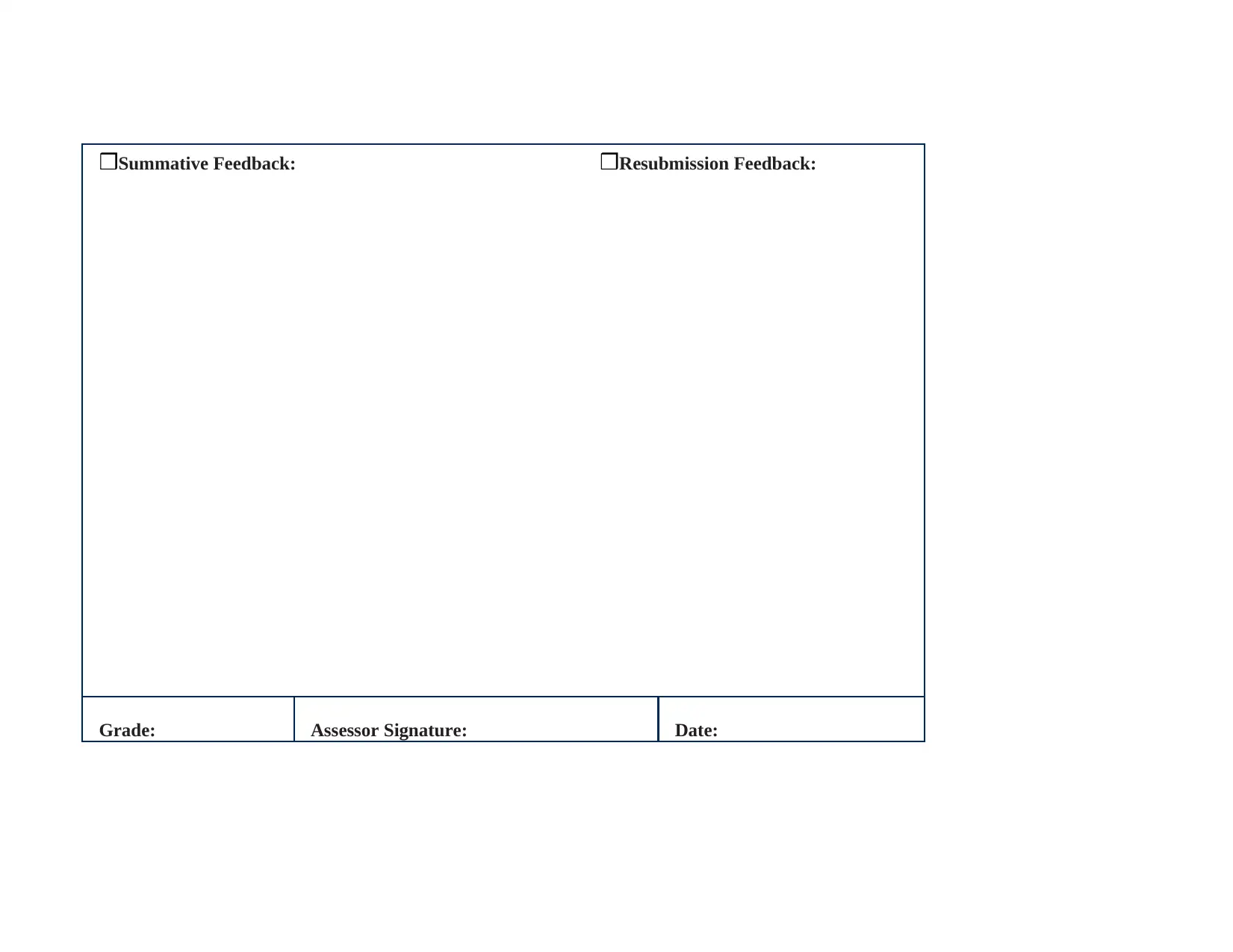
❒Summative Feedback: ❒Resubmission Feedback:
Grade: Assessor Signature: Date:
Grade: Assessor Signature: Date:
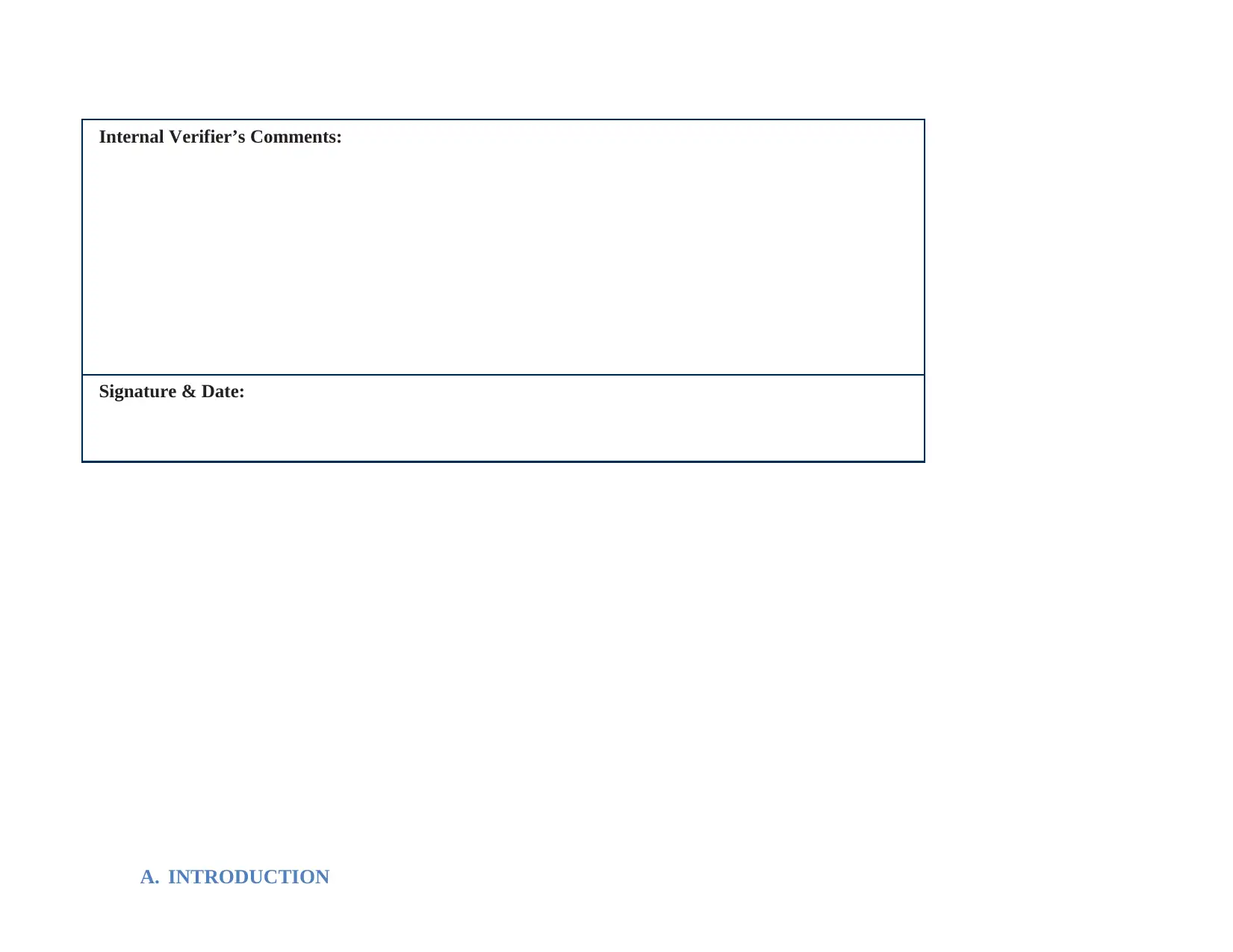
Internal Verifier’s Comments:
Signature & Date:
A. INTRODUCTION
Signature & Date:
A. INTRODUCTION
⊘ This is a preview!⊘
Do you want full access?
Subscribe today to unlock all pages.

Trusted by 1+ million students worldwide
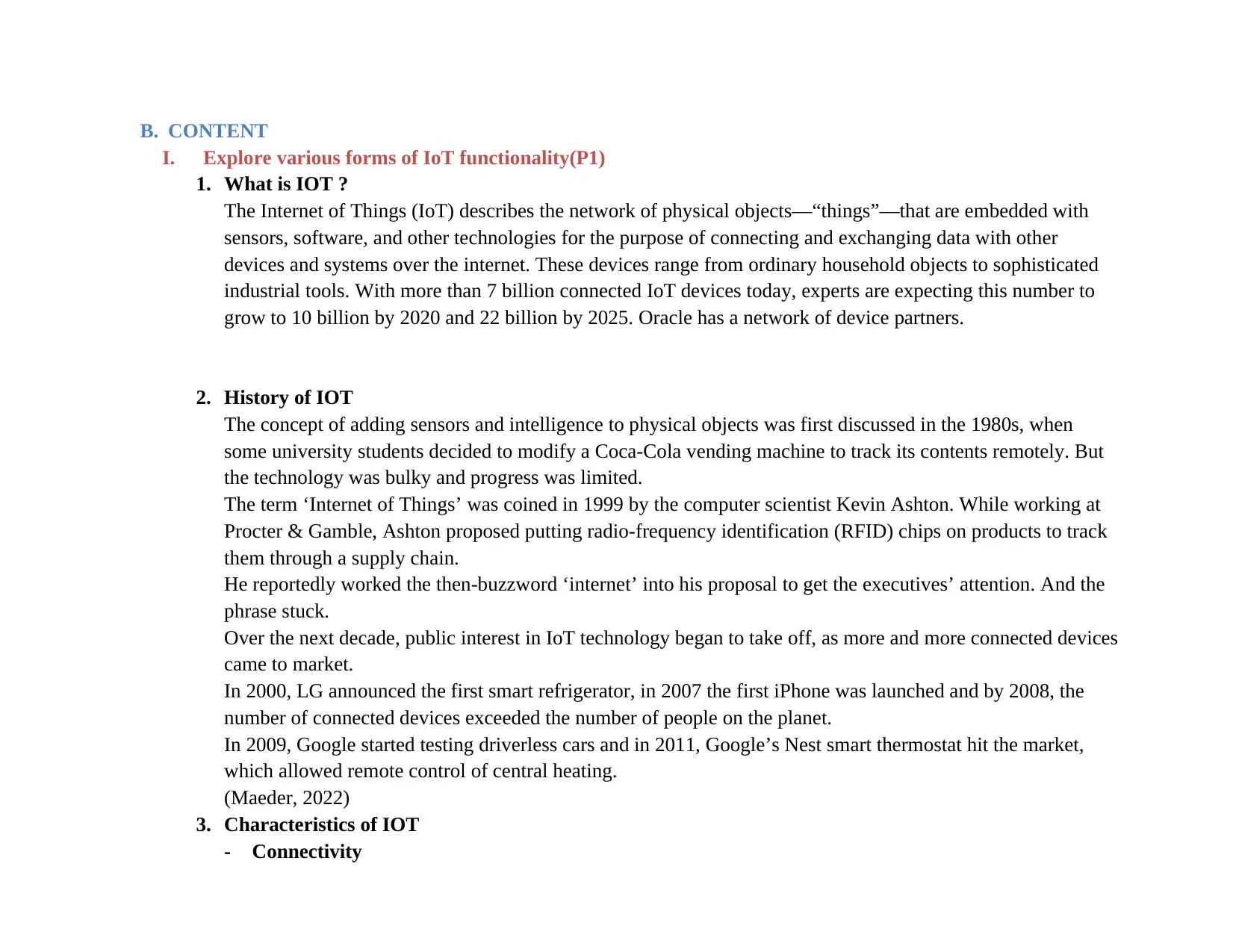
B. CONTENT
I. Explore various forms of IoT functionality(P1)
1. What is IOT ?
The Internet of Things (IoT) describes the network of physical objects—“things”—that are embedded with
sensors, software, and other technologies for the purpose of connecting and exchanging data with other
devices and systems over the internet. These devices range from ordinary household objects to sophisticated
industrial tools. With more than 7 billion connected IoT devices today, experts are expecting this number to
grow to 10 billion by 2020 and 22 billion by 2025. Oracle has a network of device partners.
2. History of IOT
The concept of adding sensors and intelligence to physical objects was first discussed in the 1980s, when
some university students decided to modify a Coca-Cola vending machine to track its contents remotely. But
the technology was bulky and progress was limited.
The term ‘Internet of Things’ was coined in 1999 by the computer scientist Kevin Ashton. While working at
Procter & Gamble, Ashton proposed putting radio-frequency identification (RFID) chips on products to track
them through a supply chain.
He reportedly worked the then-buzzword ‘internet’ into his proposal to get the executives’ attention. And the
phrase stuck.
Over the next decade, public interest in IoT technology began to take off, as more and more connected devices
came to market.
In 2000, LG announced the first smart refrigerator, in 2007 the first iPhone was launched and by 2008, the
number of connected devices exceeded the number of people on the planet.
In 2009, Google started testing driverless cars and in 2011, Google’s Nest smart thermostat hit the market,
which allowed remote control of central heating.
(Maeder, 2022)
3. Characteristics of IOT
- Connectivity
I. Explore various forms of IoT functionality(P1)
1. What is IOT ?
The Internet of Things (IoT) describes the network of physical objects—“things”—that are embedded with
sensors, software, and other technologies for the purpose of connecting and exchanging data with other
devices and systems over the internet. These devices range from ordinary household objects to sophisticated
industrial tools. With more than 7 billion connected IoT devices today, experts are expecting this number to
grow to 10 billion by 2020 and 22 billion by 2025. Oracle has a network of device partners.
2. History of IOT
The concept of adding sensors and intelligence to physical objects was first discussed in the 1980s, when
some university students decided to modify a Coca-Cola vending machine to track its contents remotely. But
the technology was bulky and progress was limited.
The term ‘Internet of Things’ was coined in 1999 by the computer scientist Kevin Ashton. While working at
Procter & Gamble, Ashton proposed putting radio-frequency identification (RFID) chips on products to track
them through a supply chain.
He reportedly worked the then-buzzword ‘internet’ into his proposal to get the executives’ attention. And the
phrase stuck.
Over the next decade, public interest in IoT technology began to take off, as more and more connected devices
came to market.
In 2000, LG announced the first smart refrigerator, in 2007 the first iPhone was launched and by 2008, the
number of connected devices exceeded the number of people on the planet.
In 2009, Google started testing driverless cars and in 2011, Google’s Nest smart thermostat hit the market,
which allowed remote control of central heating.
(Maeder, 2022)
3. Characteristics of IOT
- Connectivity
Paraphrase This Document
Need a fresh take? Get an instant paraphrase of this document with our AI Paraphraser
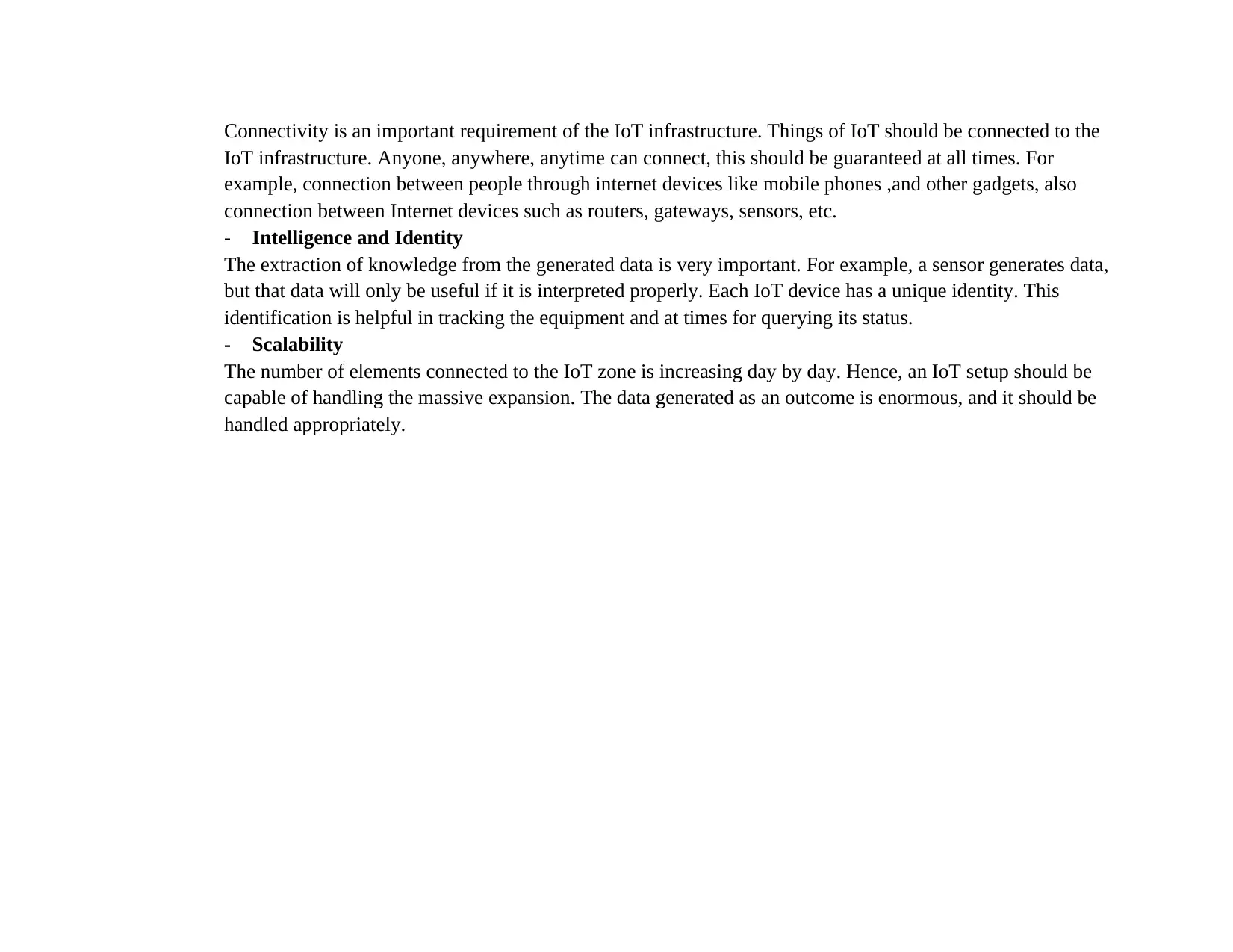
Connectivity is an important requirement of the IoT infrastructure. Things of IoT should be connected to the
IoT infrastructure. Anyone, anywhere, anytime can connect, this should be guaranteed at all times. For
example, connection between people through internet devices like mobile phones ,and other gadgets, also
connection between Internet devices such as routers, gateways, sensors, etc.
- Intelligence and Identity
The extraction of knowledge from the generated data is very important. For example, a sensor generates data,
but that data will only be useful if it is interpreted properly. Each IoT device has a unique identity. This
identification is helpful in tracking the equipment and at times for querying its status.
- Scalability
The number of elements connected to the IoT zone is increasing day by day. Hence, an IoT setup should be
capable of handling the massive expansion. The data generated as an outcome is enormous, and it should be
handled appropriately.
IoT infrastructure. Anyone, anywhere, anytime can connect, this should be guaranteed at all times. For
example, connection between people through internet devices like mobile phones ,and other gadgets, also
connection between Internet devices such as routers, gateways, sensors, etc.
- Intelligence and Identity
The extraction of knowledge from the generated data is very important. For example, a sensor generates data,
but that data will only be useful if it is interpreted properly. Each IoT device has a unique identity. This
identification is helpful in tracking the equipment and at times for querying its status.
- Scalability
The number of elements connected to the IoT zone is increasing day by day. Hence, an IoT setup should be
capable of handling the massive expansion. The data generated as an outcome is enormous, and it should be
handled appropriately.
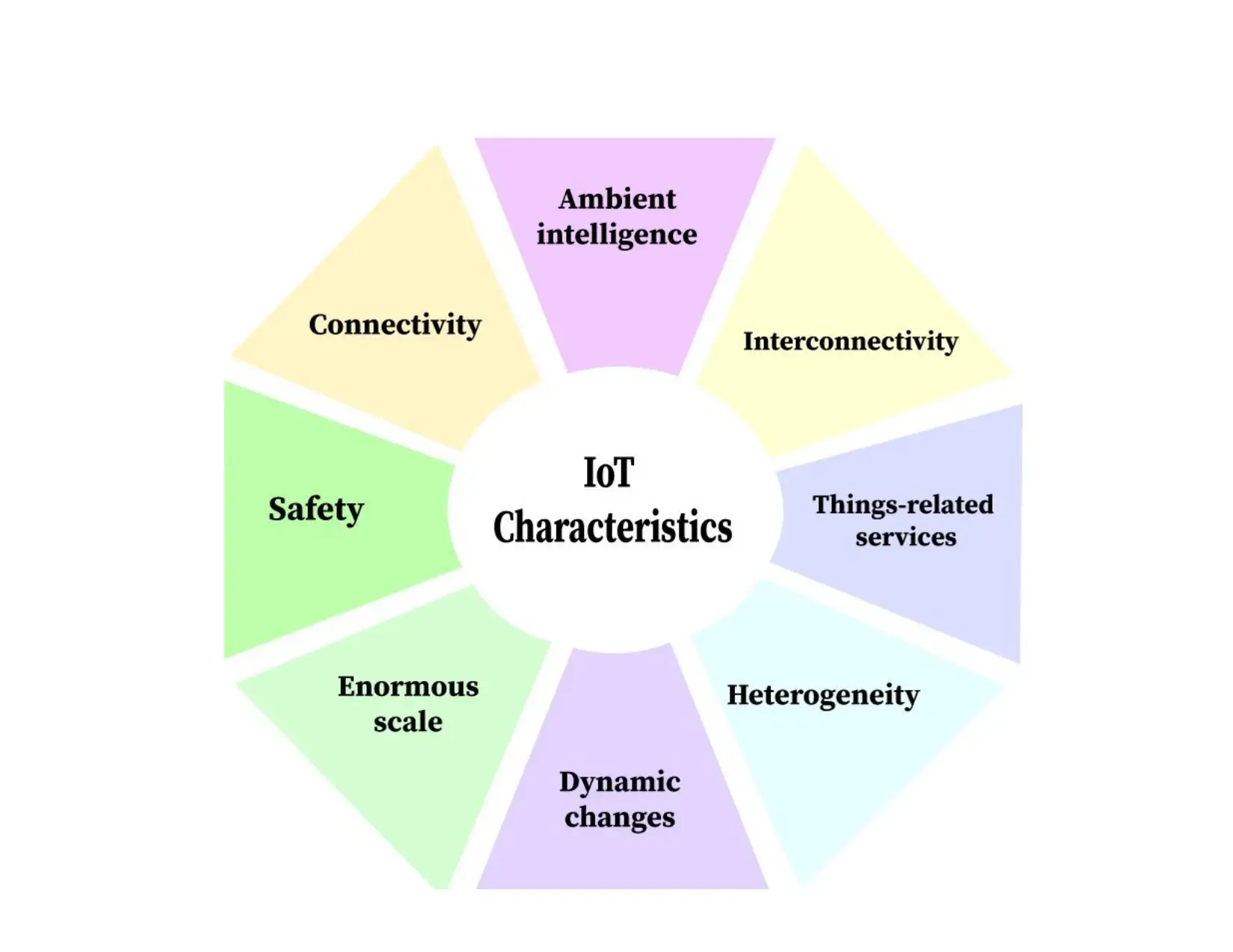
⊘ This is a preview!⊘
Do you want full access?
Subscribe today to unlock all pages.

Trusted by 1+ million students worldwide
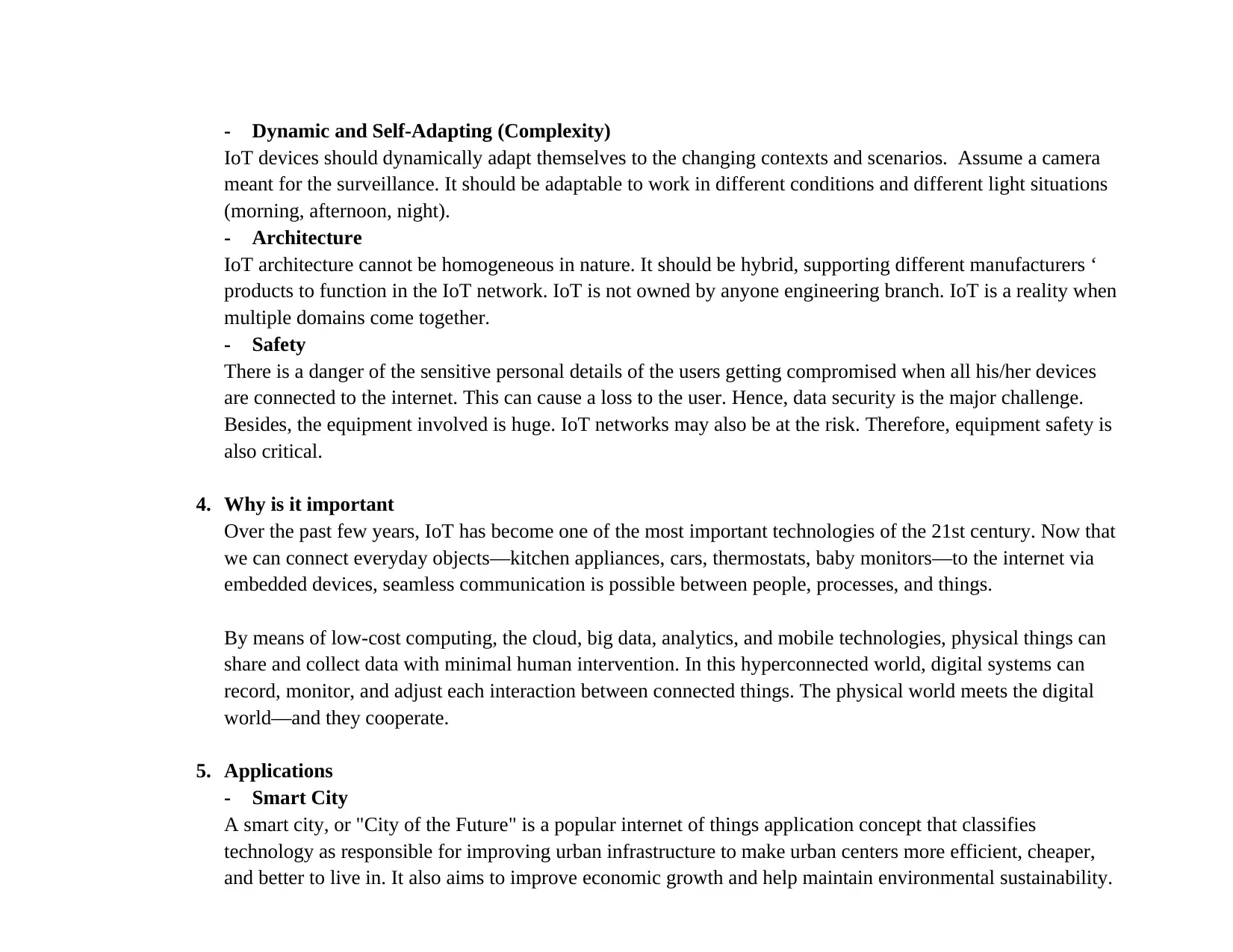
- Dynamic and Self-Adapting (Complexity)
IoT devices should dynamically adapt themselves to the changing contexts and scenarios. Assume a camera
meant for the surveillance. It should be adaptable to work in different conditions and different light situations
(morning, afternoon, night).
- Architecture
IoT architecture cannot be homogeneous in nature. It should be hybrid, supporting different manufacturers ‘
products to function in the IoT network. IoT is not owned by anyone engineering branch. IoT is a reality when
multiple domains come together.
- Safety
There is a danger of the sensitive personal details of the users getting compromised when all his/her devices
are connected to the internet. This can cause a loss to the user. Hence, data security is the major challenge.
Besides, the equipment involved is huge. IoT networks may also be at the risk. Therefore, equipment safety is
also critical.
4. Why is it important
Over the past few years, IoT has become one of the most important technologies of the 21st century. Now that
we can connect everyday objects—kitchen appliances, cars, thermostats, baby monitors—to the internet via
embedded devices, seamless communication is possible between people, processes, and things.
By means of low-cost computing, the cloud, big data, analytics, and mobile technologies, physical things can
share and collect data with minimal human intervention. In this hyperconnected world, digital systems can
record, monitor, and adjust each interaction between connected things. The physical world meets the digital
world—and they cooperate.
5. Applications
- Smart City
A smart city, or "City of the Future" is a popular internet of things application concept that classifies
technology as responsible for improving urban infrastructure to make urban centers more efficient, cheaper,
and better to live in. It also aims to improve economic growth and help maintain environmental sustainability.
IoT devices should dynamically adapt themselves to the changing contexts and scenarios. Assume a camera
meant for the surveillance. It should be adaptable to work in different conditions and different light situations
(morning, afternoon, night).
- Architecture
IoT architecture cannot be homogeneous in nature. It should be hybrid, supporting different manufacturers ‘
products to function in the IoT network. IoT is not owned by anyone engineering branch. IoT is a reality when
multiple domains come together.
- Safety
There is a danger of the sensitive personal details of the users getting compromised when all his/her devices
are connected to the internet. This can cause a loss to the user. Hence, data security is the major challenge.
Besides, the equipment involved is huge. IoT networks may also be at the risk. Therefore, equipment safety is
also critical.
4. Why is it important
Over the past few years, IoT has become one of the most important technologies of the 21st century. Now that
we can connect everyday objects—kitchen appliances, cars, thermostats, baby monitors—to the internet via
embedded devices, seamless communication is possible between people, processes, and things.
By means of low-cost computing, the cloud, big data, analytics, and mobile technologies, physical things can
share and collect data with minimal human intervention. In this hyperconnected world, digital systems can
record, monitor, and adjust each interaction between connected things. The physical world meets the digital
world—and they cooperate.
5. Applications
- Smart City
A smart city, or "City of the Future" is a popular internet of things application concept that classifies
technology as responsible for improving urban infrastructure to make urban centers more efficient, cheaper,
and better to live in. It also aims to improve economic growth and help maintain environmental sustainability.
Paraphrase This Document
Need a fresh take? Get an instant paraphrase of this document with our AI Paraphraser
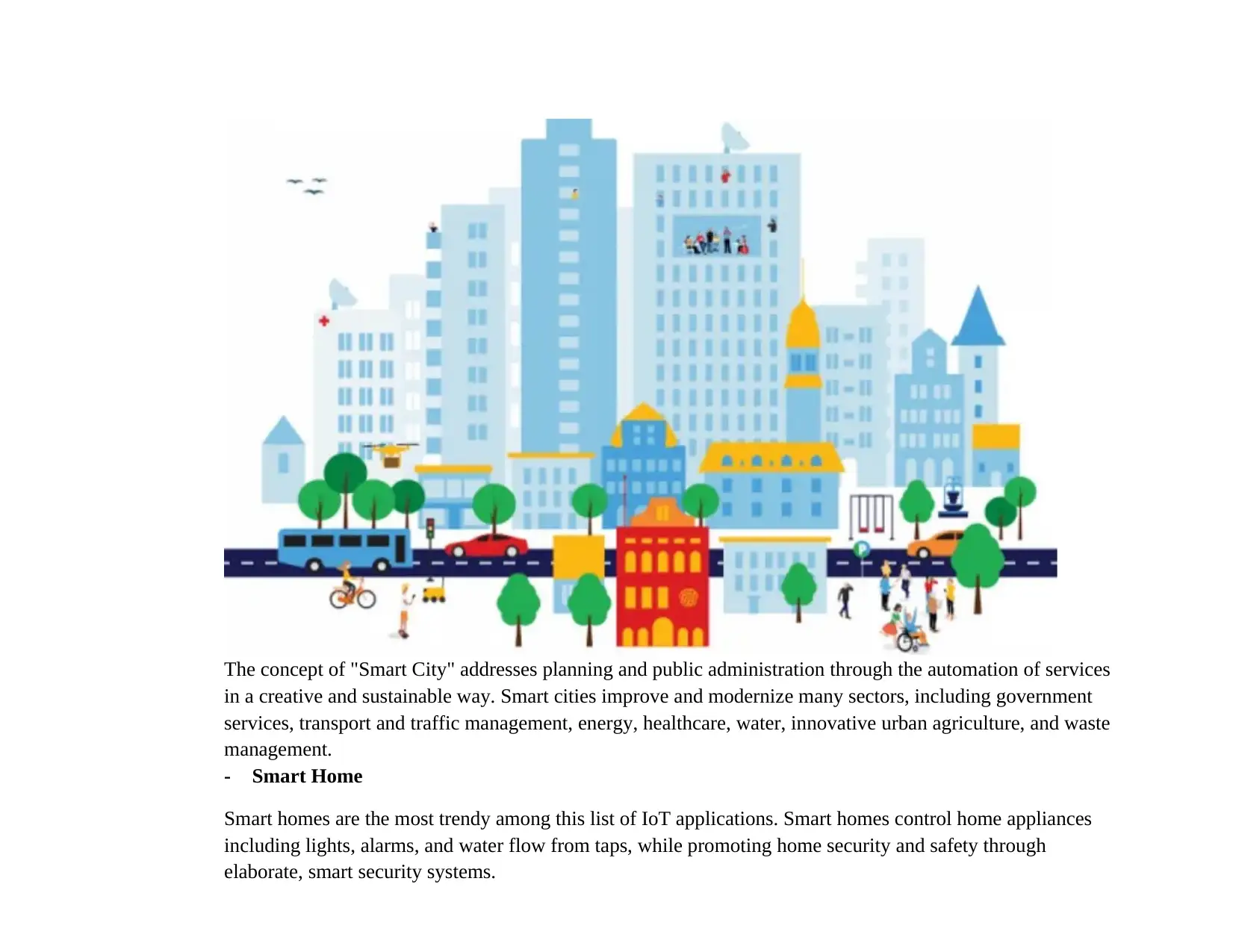
The concept of "Smart City" addresses planning and public administration through the automation of services
in a creative and sustainable way. Smart cities improve and modernize many sectors, including government
services, transport and traffic management, energy, healthcare, water, innovative urban agriculture, and waste
management.
- Smart Home
Smart homes are the most trendy among this list of IoT applications. Smart homes control home appliances
including lights, alarms, and water flow from taps, while promoting home security and safety through
elaborate, smart security systems.
in a creative and sustainable way. Smart cities improve and modernize many sectors, including government
services, transport and traffic management, energy, healthcare, water, innovative urban agriculture, and waste
management.
- Smart Home
Smart homes are the most trendy among this list of IoT applications. Smart homes control home appliances
including lights, alarms, and water flow from taps, while promoting home security and safety through
elaborate, smart security systems.
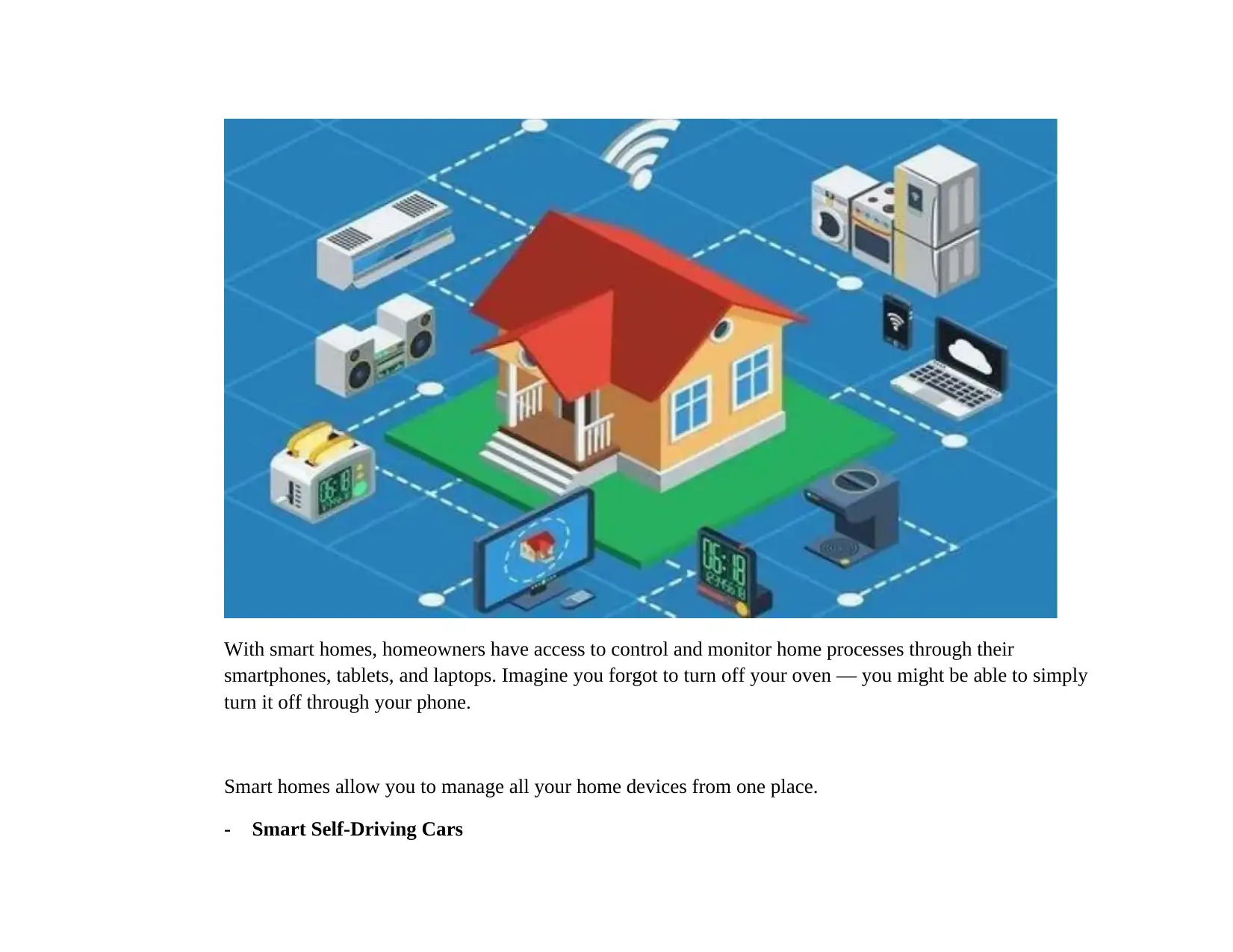
With smart homes, homeowners have access to control and monitor home processes through their
smartphones, tablets, and laptops. Imagine you forgot to turn off your oven — you might be able to simply
turn it off through your phone.
Smart homes allow you to manage all your home devices from one place.
- Smart Self-Driving Cars
smartphones, tablets, and laptops. Imagine you forgot to turn off your oven — you might be able to simply
turn it off through your phone.
Smart homes allow you to manage all your home devices from one place.
- Smart Self-Driving Cars
⊘ This is a preview!⊘
Do you want full access?
Subscribe today to unlock all pages.

Trusted by 1+ million students worldwide
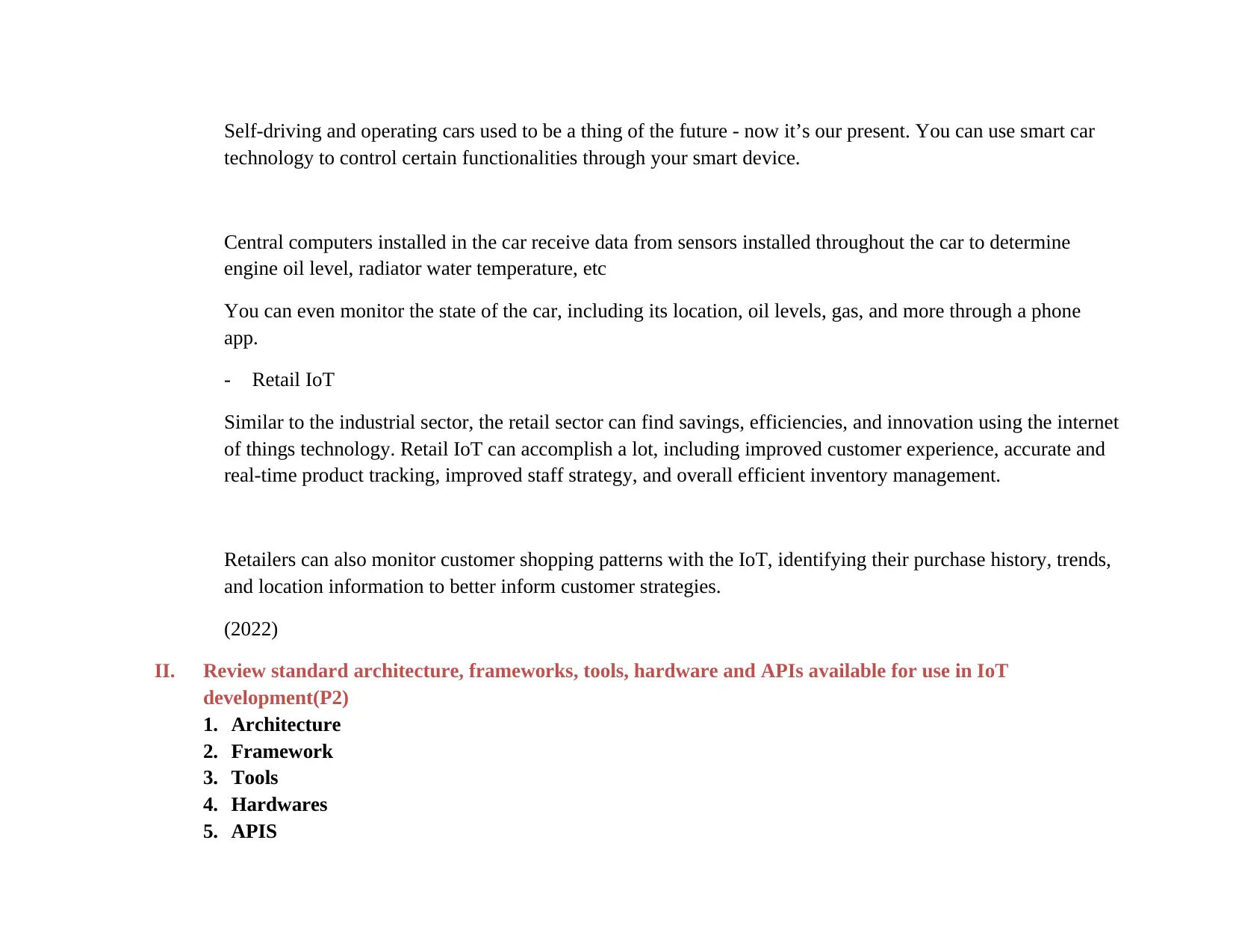
Self-driving and operating cars used to be a thing of the future - now it’s our present. You can use smart car
technology to control certain functionalities through your smart device.
Central computers installed in the car receive data from sensors installed throughout the car to determine
engine oil level, radiator water temperature, etc
You can even monitor the state of the car, including its location, oil levels, gas, and more through a phone
app.
- Retail IoT
Similar to the industrial sector, the retail sector can find savings, efficiencies, and innovation using the internet
of things technology. Retail IoT can accomplish a lot, including improved customer experience, accurate and
real-time product tracking, improved staff strategy, and overall efficient inventory management.
Retailers can also monitor customer shopping patterns with the IoT, identifying their purchase history, trends,
and location information to better inform customer strategies.
(2022)
II. Review standard architecture, frameworks, tools, hardware and APIs available for use in IoT
development(P2)
1. Architecture
2. Framework
3. Tools
4. Hardwares
5. APIS
technology to control certain functionalities through your smart device.
Central computers installed in the car receive data from sensors installed throughout the car to determine
engine oil level, radiator water temperature, etc
You can even monitor the state of the car, including its location, oil levels, gas, and more through a phone
app.
- Retail IoT
Similar to the industrial sector, the retail sector can find savings, efficiencies, and innovation using the internet
of things technology. Retail IoT can accomplish a lot, including improved customer experience, accurate and
real-time product tracking, improved staff strategy, and overall efficient inventory management.
Retailers can also monitor customer shopping patterns with the IoT, identifying their purchase history, trends,
and location information to better inform customer strategies.
(2022)
II. Review standard architecture, frameworks, tools, hardware and APIs available for use in IoT
development(P2)
1. Architecture
2. Framework
3. Tools
4. Hardwares
5. APIS
Paraphrase This Document
Need a fresh take? Get an instant paraphrase of this document with our AI Paraphraser
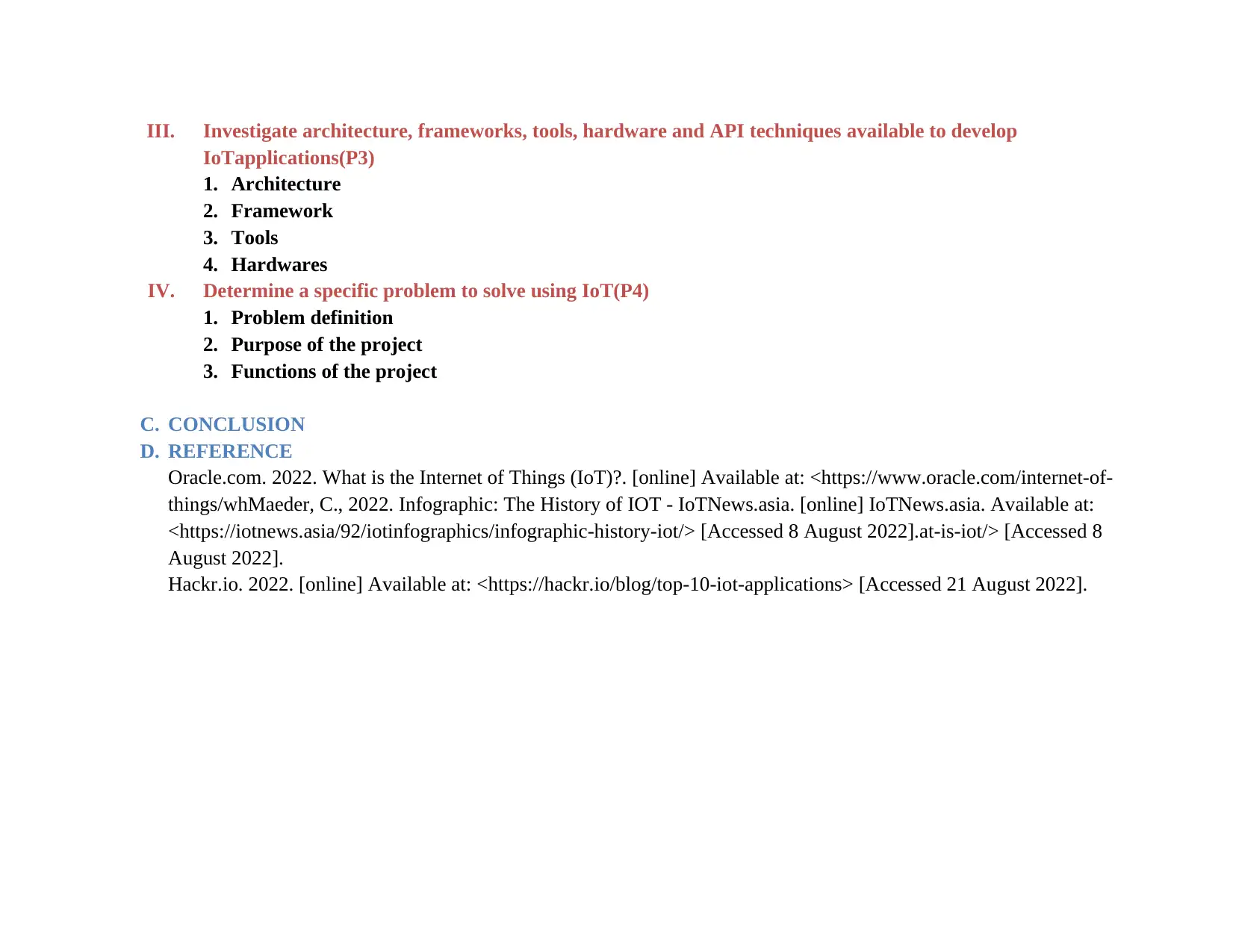
III. Investigate architecture, frameworks, tools, hardware and API techniques available to develop
IoTapplications(P3)
1. Architecture
2. Framework
3. Tools
4. Hardwares
IV. Determine a specific problem to solve using IoT(P4)
1. Problem definition
2. Purpose of the project
3. Functions of the project
C. CONCLUSION
D. REFERENCE
Oracle.com. 2022. What is the Internet of Things (IoT)?. [online] Available at: <https://www.oracle.com/internet-of-
things/whMaeder, C., 2022. Infographic: The History of IOT - IoTNews.asia. [online] IoTNews.asia. Available at:
<https://iotnews.asia/92/iotinfographics/infographic-history-iot/> [Accessed 8 August 2022].at-is-iot/> [Accessed 8
August 2022].
Hackr.io. 2022. [online] Available at: <https://hackr.io/blog/top-10-iot-applications> [Accessed 21 August 2022].
IoTapplications(P3)
1. Architecture
2. Framework
3. Tools
4. Hardwares
IV. Determine a specific problem to solve using IoT(P4)
1. Problem definition
2. Purpose of the project
3. Functions of the project
C. CONCLUSION
D. REFERENCE
Oracle.com. 2022. What is the Internet of Things (IoT)?. [online] Available at: <https://www.oracle.com/internet-of-
things/whMaeder, C., 2022. Infographic: The History of IOT - IoTNews.asia. [online] IoTNews.asia. Available at:
<https://iotnews.asia/92/iotinfographics/infographic-history-iot/> [Accessed 8 August 2022].at-is-iot/> [Accessed 8
August 2022].
Hackr.io. 2022. [online] Available at: <https://hackr.io/blog/top-10-iot-applications> [Accessed 21 August 2022].
1 out of 11
Related Documents
Your All-in-One AI-Powered Toolkit for Academic Success.
+13062052269
info@desklib.com
Available 24*7 on WhatsApp / Email
![[object Object]](/_next/static/media/star-bottom.7253800d.svg)
Unlock your academic potential
Copyright © 2020–2025 A2Z Services. All Rights Reserved. Developed and managed by ZUCOL.



